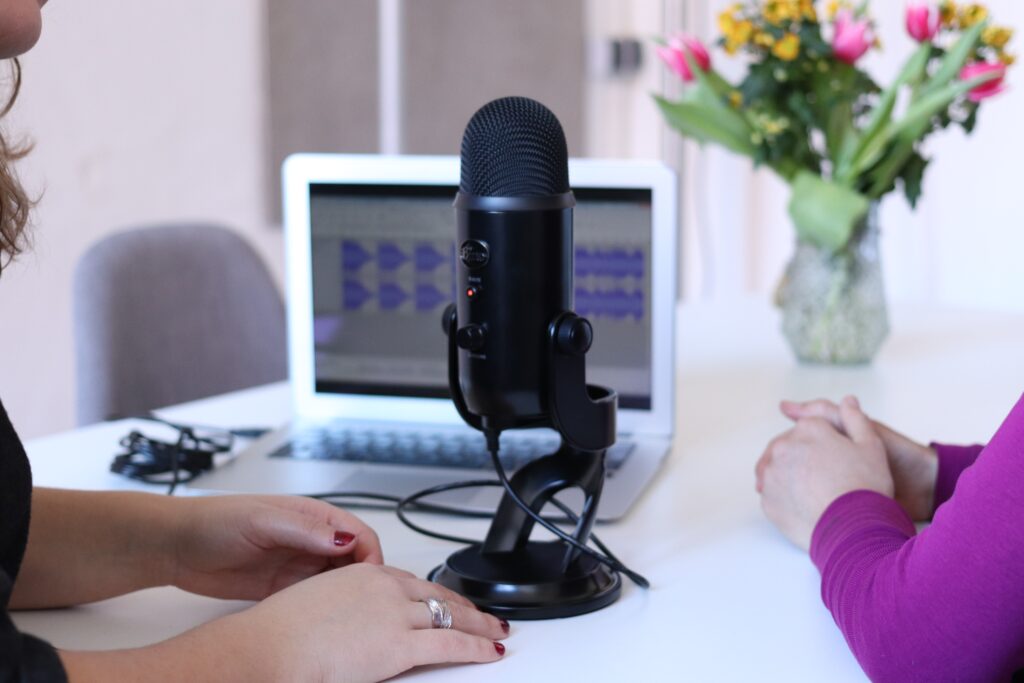
Assigning, Coaching, and Marking Recorded Presentations
This post provides some general tips and ideas for when your Course Outline requires that students submit a recorded presentation for an assignment. What follows are ideas that you may be able to adapt to your course’s context to make this work. I have used a Q and A format so you can scan through to the questions that most interest you.
Should students present alone or in a group?
It depends on the assignment, but I suggest you give students the option of completing the assignment alone or with a partner and when a good argument is made, allow a maximum of a group of 3. Note that students in groups should be able to demonstrate all criteria evaluated in the assessment.
What is the minimum value for such an assignment?
The effort to complete the assigned task should be commensurate with the weight of the marks available to be earned. I would suggest a range of 15-20 percent to make the type of work I am describing worth the student energy, effort, and time.
How long should the presentation be per student?
For a first semester course, I suggest a final product range of 3-4 minutes with a maximum of 5 before you stop marking the presentation. Be clear to students that they may lose marks for their conclusion or other content if they go over. So, a group of 3 would have a range of 9-12 minutes and would be mutually responsible for ensuring the submission stays within the set limit. In capstone or higher year courses, I would still cap at 10 minutes per student.
How would a group maintain evidence of contribution? How would I know if the student worked through the content instead of having someone else prepare it and they just present it?
Students can be required to have all their planning meetings or do their 2 drafts via a recorded Zoom session. You can request those links be included in the submission or tell them they will be required should any concerns arise. Be sure to clearly outline what pre-work is required and when those checkpoints should be completed.
How will I be sure students engage with each other’s presentations? How will they be sure to solidify their course outcome learning by watching multiple presentations?
I suggest that you divide your class into pods of 6 students who will get part of their rubric mark (see below) from watching and giving feedback on the other 5 presentations. If students are working with partners, you could increase the pod size to 12. Note that unless students are being evaluated on giving peer feedback to recorded presentations, students should be given an option to share their recorded work.
What would students be giving feedback on? Can they just use my rubric?
Students should be giving feedback that enhances their learning and gently encourages growth in their peer. It isn’t appropriate to expect students to use the rubric of a professional educator. I suggest one of the following types of feedback be required.
Constructive Feedback Form
Groups of 5 watch each other’s videos and submit suggestions to you and each other using prompts such as:
- Was the start catchy?
- How could it have interested you in the topic even more? Did the session prepare you well on this topic?
- What was something that left you confused or uncertain? Could you follow the presentation?
- Suggest something that would have made it easier for you to absorb the information. Using the ICE model of ideas, connections and extensions for the field, suggest one more of each that could have been added.
Recorded Feedback Session
Groups of 5 watch each other’s videos and join a recorded Zoom feedback circle.
- Was the start catchy? How could it have interested you in the topic even more?
- Did the session prepare you well on this topic?
- What was something that left you confused or uncertain?
- Could you follow the presentation?
- Suggest something that would have made it easier for you to absorb the information.
- Using the ICE model of ideas, connections, and extensions for the field, suggest one more of each that could have been added.
Connections and Extensions Form
Groups of 5 watch each others’ videos and explain to you how the topics connect in the course and future learning, and work.
- How did this topic connect to yours?
- In what ways does this topic relate to the course as a whole?
- Name 3 ways that watching this presentation helped you to understand the topic’s importance for your future learning.
- Using the ICE model of ideas, connections and extensions for the field, suggest one more of each that could have been added.
- Could you follow the presentation? Suggest something that would have made it easier for you to absorb the information.
Knowledge, Skills and Attitudes Form
Groups of 5 watch each others’ videos and submit the following to you.
- Did this presentation enhance your knowledge beyond what was provided in the course? Explain how.
- Did the presentation help you plan how to develop a new workplace skill? Explain how.
- Did your attitude on the topic change as a result of the presentation? If not, why not? If yes, in what way?
- Using the ICE model of ideas, connections, and extensions for the field, suggest one more of each that could have been added.
- Who will help my students figure out Zoom and other technical needs?
What if my students don’t know how to use or submit recording technologies?
Teach Me Tech: This is a summary of resources and supports provided by the library to support students’ use of technology as they learn. Includes Zoom support and one-on-one chats. If you are requiring a recorded presentation, you should provide resources to help students with the technology.
What if my student for religious or personal safety or privacy reasons does not want their image in the video?
Students who do not want their image captured can use an avatar using Zoom. Note: BuddyPoke, Voki, and CrazyTalk are the only free options we have located so far and they may collect student data to use their service, so students should be aware of this, and not be required to use any, if they prefer to remain private. Need a talking avatar?
Another option is to allow students to record voice only as they display supporting visuals.
How will I mark the recorded presentation?
See the below suggested rubric criteria for you to work with. Review your course outcomes and program outcomes and make it a fit for your goals.
Requiring recorded presentations could lead to the following benefits so I hope you try it, and let me know how it goes!
- Smaller groups of presenters rehearsing content, watching and supporting each other could lead to more learning, community building, and retention
- You may have less marking stress and more flexibility in timing than with live presentations
- Evidence is maintained both for you in case of a student mark concern and for students as artifacts of learning and inclusion in their portfolios






